Getting Ready for the Cold
I thought this might be the winter when we’d go without any extreme cold in North Texas (DFW area), but silly me. I heard the forecasts for this weekend beginning Monday, and I blinked on Tuesday.
Most of my landscape consists of plants that can stand up to any cold Texas winters throw at them. That was no accident. I’m not a big fan of replacing frozen shrubs.
However, years ago a nursery that owed me advertising money was closing its doors. The owner invited me to take anything that I wanted to settle the bill, and I decided I really wanted aspidistras lining my driveway.
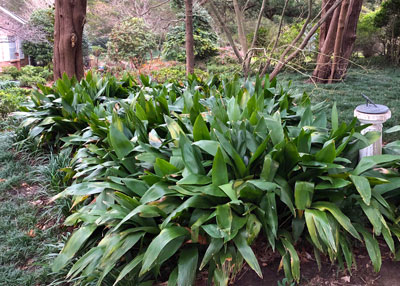
Aspidistra before covering.
Well, that wasn’t the best plan, because where we live in rural Collin County it gets 8 or 10 degrees colder than most of the rest of the Metroplex. It’s not exactly Aspidistra Country.
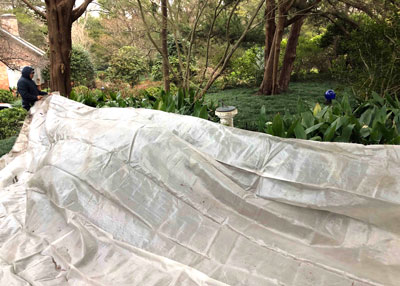
Frost cloth being pulled in place.
I had some help Tuesday morning and we got the plants covered in anticipation of the cold. I’ve used several types of frost cloth over the years, from lightweight gauze-like fabric that had its birth in the strawberry and vegetable fields of California to a heavier-weight material that reuses well from one year to the next.
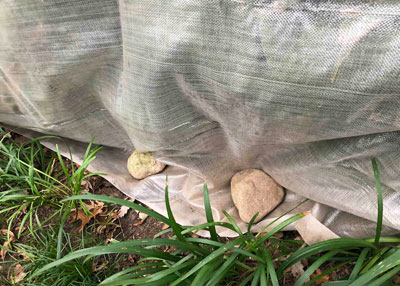
Weighting down the frost cloth.
I buy my frost cloth in the fall, while everyone has a full supply, and I buy it in wide, folded rolls so there are far fewer seams to blow open.
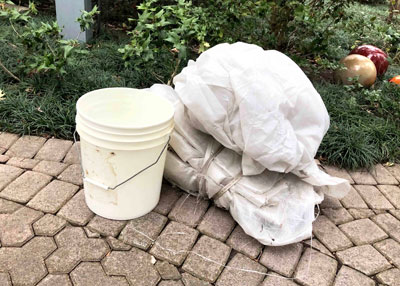
Frost cloth being used second year.
We cut the pieces to fit each bed that will be covered, allowing 2-4 feet of overage since it will be mounded up over the plants. Then we refold it and put it in bags until we need it.
How frost cloth works…
These products don’t really “keep your plants warm” in the purest sense. They allow the sun’s rays to penetrate and soak into the soil, then they hold the solar heat and release it back overnight. But equally important: frost cloths protect tender plant parts from drying, cold winds. You can gain 6-8 degrees of protection by covering your plants.
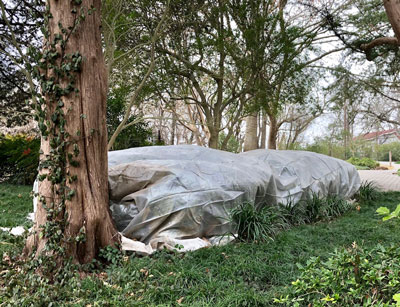
All bundled up and ready. Bring on winter!
Wonder which plants should be covered? Winter annuals will benefit if they’re in bloom and if temperatures are forecast to drop into the 20s. Plants that are known to be winter-tender in your part of Texas will, too. If you’re in doubt, ask your Texas Certified Nursery Professional at a local independent retail garden center to give you suggestions.
Leave your annual flowers covered until the weather moderates. If you’ve gone to a lot of trouble to cover shrubs and groundcovers like we have, there really is no need to rush to uncover them. I’ve left these aspidistra plants covered for 8 or 10 weeks in really bad winters. They come out looking as fresh as springtime.
